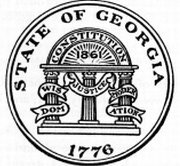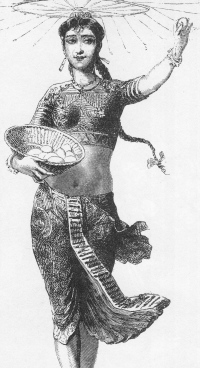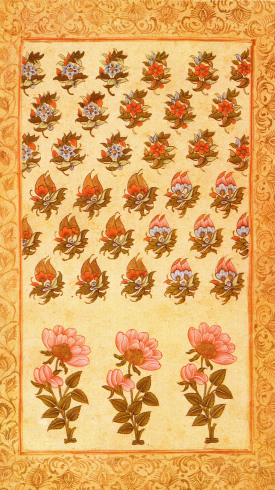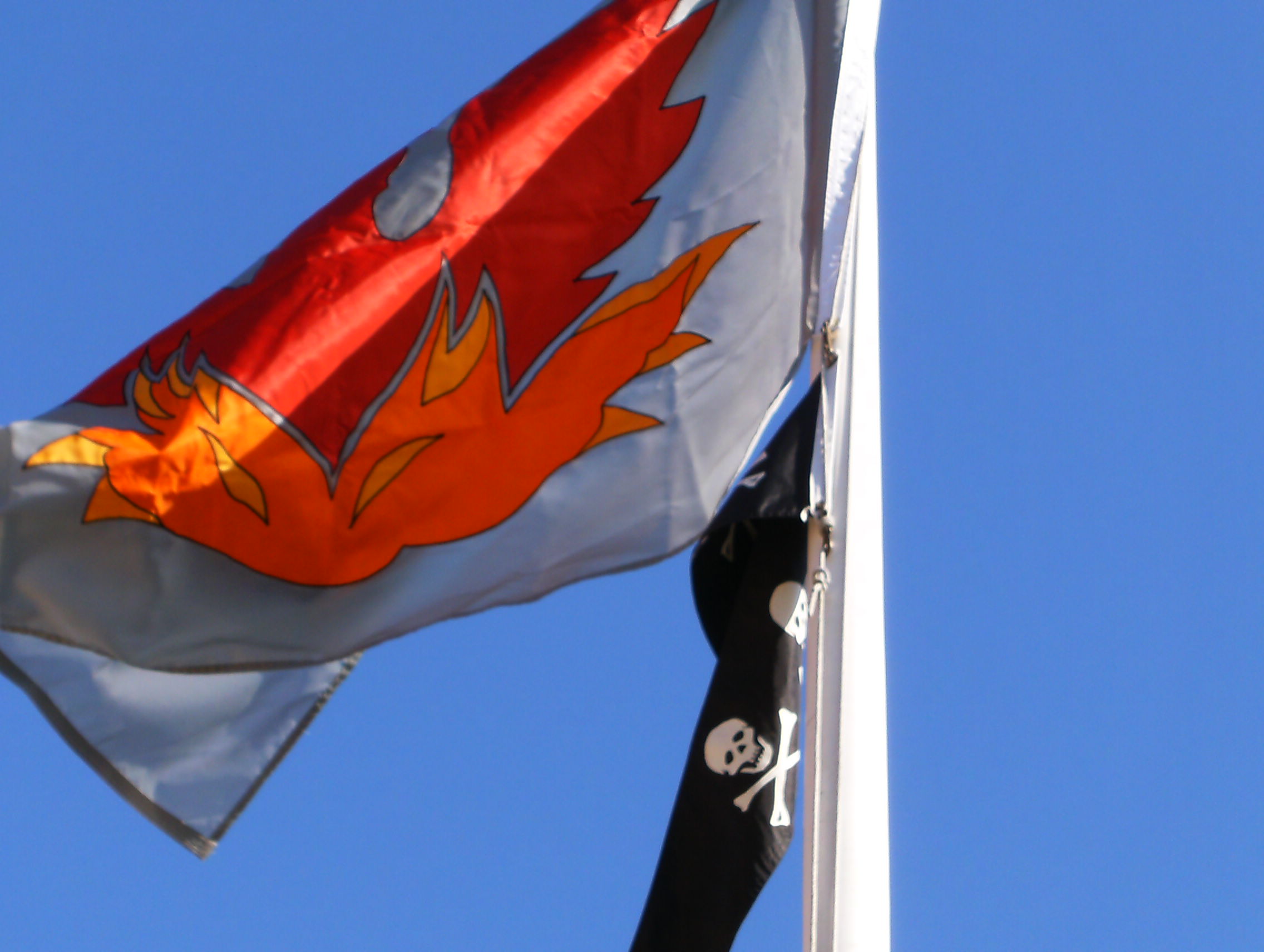Notes on Country Captain
 This is one of the better dishes in the world and it has one of the better names. Country Captain has virtually infinite variations, but devolves into two dominant coalitions of shifting recipes. The original tradition probably dates from the eighteenth century and is the Miesian version from the British Raj, chicken typically cooked with, at most, chili, garlic, ginger, lemon, onion, a few Indian spices and not much else. In even simpler guise, “the dish consists of little more than chicken flavoured with chilli and turmeric.” (Raj 113)
This is one of the better dishes in the world and it has one of the better names. Country Captain has virtually infinite variations, but devolves into two dominant coalitions of shifting recipes. The original tradition probably dates from the eighteenth century and is the Miesian version from the British Raj, chicken typically cooked with, at most, chili, garlic, ginger, lemon, onion, a few Indian spices and not much else. In even simpler guise, “the dish consists of little more than chicken flavoured with chilli and turmeric.” (Raj 113)
The second group of recipes is relatively baroque and developed during the early nineteenth century in the American south. These typically omit the ginger and citrus, and adds bacon, bell pepper, tomatoes and the fuller range of curry spices to its precursor. Some southern versions also include allspice, almonds, peanuts or pecans, apples, cauliflower and peas (but never apart), celery, cream (‘purists’ decry this one), currants, flour, mace, orange juice, parsley, raisins, thyme, white wine and zucchini in different combinations and permutations. This is the Country Captain that an American home cook, not only within but also beyond the south, is more likely to recognize. Following the example of Bill Neal, it also has become a staple of serious southern restaurants from Charleston and Savannah to Atlanta and Athens.

Despite the inclusion of Indian spice in the British strain of Country Captain, and of curry powder in its southern cousin, the taste of neither style resembles what the Anglo-American world considers a curry. Both of them are delicious, however, and despite the obvious appeal of the more robust southern variants, less can indeed be more: The relatively unknown British version has a bright, pristine clarity that is quick to prepare, tastes refreshing and deserves a wider following.

Speculation and no little controversy surround the origin, both of the dish and of its name, mostly as the result of a certain cultural ‘nationalism’ that arose before the dawn of regional confidence in a distinct and valuable southern identity in the late twentieth century. In 1985, Bill Neal wrote that:
“This dish is so thoroughly naturalized now in the South that I have heard its birthright claimed by an inhabitant of almost any large seaport. The seaports transmitted the exotic spices to the cooks of the South, so that any dish featuring cinnamon, nutmeg, ginger, or curry--the flavors of the Indies and the orient--was associated with the major harbor towns.” (Southern Cooking 114)
The Encyclopedia of American Food and Drink credits Savannah with the origin of Country Captain; James Villas calls it a “delectable Virginia classic that traces its mysterious roots to India,” adding anachronistically that it “helped nourish the first colonial settlers.” (Stews 126) Others, almost apoplectically, claim the dish for Charleston.
On the name itself, one school of thought speculates that ‘Captain’ is a corruption of ‘capon;’ the ordinarily reliable Theodora FitzGibbon not only repeats this assertion but also refers to ‘county captain’ as if the dish originated in the shires of England. (Western World 114)
All of these assertions about origin and nomenclature are wrong.
According to David Burton:
“The Raj’s most celebrated chicken dish is undoubtedly country captain, but its origins are not entirely clear. The term ‘country’ used to refer to anything of Indian, rather than British, origin, and hence the country captain after whom this dish is named may have been in charge of Sepoys. It seems more likely, however, that he was the captain of a country boat, since the recipe turned up midway through the nineteenth century at ports as far apart as Liverpool and the American South (where many Americans still mistakenly think the dish originated).” (Raj 113)
Sepoys were Indian soldiers commanded by British officers in the service of the
Raj, but given the geographical distribution of Country Captain, we also find the nautical origin of the term based on Indian shipping more convincing.

Mughal decorative painting
According to Sam Sifton in 1991 his colleague Molly O’Neill traced the first reference to Country Captain to Miss Leslie’s New Cookery Book, an 1857 Philadelphia imprint, and debunked the myth of its southern origin. (Times 2009) Sifton gives O’Neill unwonted credit, for as in so many things, Bill Neal scooped his contemporaries in spurning conventional wisdom to rediscover a historical truth. Six years before O’Neill, he quoted the same source to explain that “Miss Leslie’s New Cookery Book of 1857 describes the origin of chicken country captain: ‘This is an East India dish and a very easy preparation of curry.’” (Southern Cooking 114)
Much like cheese straws, Country Captain is more evident today in its adoptive country, or region, than in Britain--or India for that matter. Few cookbooks of either British or Indian foods include a recipe. In addition to Neal, however, James Beard, Nathalie Dupree, John Egerton, Matt and Ted Lee, Edna Lewis, Scott Peacock, Robert Stehling, Patricia Bunning Stevens, John Martin Taylor, James Villas and others offer recipes. It is a staple of spiral bound community cookbooks throughout the south and appears in two American classics, Fannie Farmer as well as The Joy of Cooking. Last year Sifton, who adores the southern slant on Country Captain, published a version that steals from just about all of them, but made no reference to the tomato and bacon free British variants. (Times 2009)
The Captain has earned other devotees outside of the south. Cecily Brownstone, an earnest food writer from Greenwich Village who jealously, not to say obsessively, guarded the ‘authentic’ southern version of the dish for some three decades, like some self-appointed Acadamie Francais protecting it from innovation, had found the origin of Country Captain in British India through the reference in Miss Leslie’s Cookery Book even earlier than Bill Neal, back in 1960.
In championing a single early twentieth century recipe, from Delmonico’s in New York of all places, Brownstone sounds positively deranged. In 1991 she told Molly O’Neill that “every variation upsets me. I would worry about eroding the image of the dish, about people getting the wrong impression.” (Times 1991) Even though most writers call for a whole cut-up chicken (Sifton is an exception; he uses thighs), Stevens specifies breast and Egerton suggests white meat if the cook prefers it, Brownstone rails against the use of chicken breast in her beloved recipe: “Using a breast, can you imagine? I don’t want to give names--I really don’t want to get into that.” Cream, a staple of French curry sauces, is worse: “[C]an you imagine that someone actually used cream? Cream! And they called it ‘Country Captain!’ It is very discouraging.” (Times 1991; Serious Eats 2008)
Brownstone also overlooked her own reference to Miss Leslie by insisting that her version was “the original recipe” even though she based it on the later Delmonico’s model. Hers is good, but suffers from the omission of bacon and is neither original nor as good as Neal’s or Peacock’s subsequent incarnations of the dish.
As its actual history indicates, claiming an exclusively ‘authentic’ rendition of Country Captain ignores the British branch of its family and in any event would be akin to codifying a single version of gumbo, meatloaf or marinara. A 1904 Calcutta recipe, for example, predates the Delmonico’s iteration (but not Miss Leslie’s, whose boiled version, ironically, is universally ignored despite starting all the southern fuss). In a world of pedantry the Calcutta version must render any subsequent recipe a fraud, even though it eschews the bell pepper and tomato beloved of Miss Brownstone, along with almost everything else from the southern recipes, in favor of the austere dish of chicken seasoned with nothing but turmeric and chili that we noted earlier. (Poynter) As the two strains of Country Captain have evolved and diverged across almost three centuries, however, they have come to have nearly nothing in common other than their name and origin. Notions of authenticity therefore are both politically correct, in a regrettably ‘postimperialist’ way, and utterly irrelevant.
In the end, the sole common denominator of these recipes is a bird (except that shrimp napped with some of the southern sauces or sautéed, Rajwise, are delicious too) and the enthusiasm of its acolytes.
***
Recipes for both British and Southern Country Captain appear in the practical, an appreciation of Bill Neal appears elsewhere in the lyrical and a discussion of Cheese Straws appears in the critical.
Sources.
David Burton, The Raj At Table: A Culinary History of the British in India (London 1993)
John Egerton, Southern Food at home, on the road, in history (Chapel Hill 1993)
Theodora FitzGibbon, The Food of the World (London 1976)
Adam Kuban, “Sunday Supper: Cecily Brownstone’s Country Captain,” www.seriouseats.com (19 January 2008)
‘Miss Leslie,’ Miss Leslie’s New Cookery Book (Philadelphia 1867)
Edna Lewis & Scott Peacock, The Gift of Southern Cooking (New York 2003)
John Mariani, The Encyclopedia of American Food and Drink (New York 1999)
Bill Neal, Southern Cooking (Chapel Hill, 1985 & 1989)
Molly O’Neill, “Long Ago Smitten, She Remains True to the Country Captain,” The New York Times (17 April 1991)
E.S. Poynter, ‘What’ and ‘How’ or What shall we have and How shall we have it? (Calcutta 1904)
Sam Sifton, “THE CHEAT; Master Class,” The New York Times Magazine (25 January 2009)
Patricia Bunning Stevens, Rare Bits: Unusual Origins of Popular Recipes (Athens, Ohio 1998)
John Martin Taylor, Hoppin’ John’s Lowcountry Cooking (New York 1992)
James Villas, Stews, Bogs and Burgoos (New York 1997)


